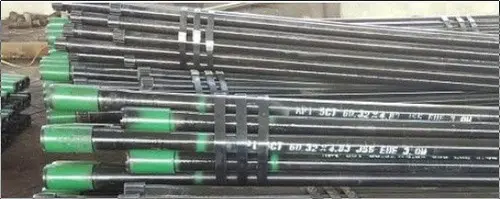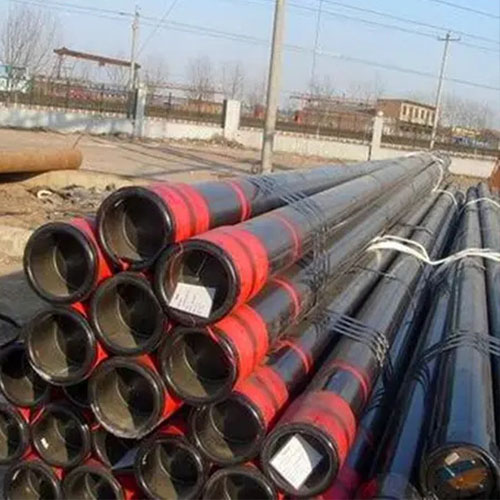Table of Contents
**أهمية الأنابيب الفولاذية غير الملحومة API 5CT في صناعة النفط والغاز**
أنابيب الصلب غير الملحومة API 5CT (أنابيب API 5CT N80/J55/K55/P110/Btc/Ltc/Bc/Eue/EU، أنابيب التغليف)
أهمية أنابيب الصلب غير الملحومة API 5CT في صناعة النفط والغاز
في صناعة النفط والغاز، تلعب الأنابيب الفولاذية غير الملحومة دورًا حاسمًا في ضمان استخراج ونقل ومعالجة البترول والغاز الطبيعي بسلاسة وكفاءة. أصبحت الأنابيب الفولاذية غير الملحومة API 5CT، بخصائصها ومواصفاتها الاستثنائية، الخيار المفضل لمختلف التطبيقات في هذه الصناعة.
أحد الأسباب الرئيسية وراء تقدير الأنابيب الفولاذية غير الملحومة API 5CT بشكل كبير في صناعة النفط والغاز هو قوة ومتانة متفوقة. يتم تصنيع هذا النوع من الأنابيب باستخدام مواد فولاذية عالية الجودة، والتي تخضع لعملية مراقبة جودة صارمة لضمان متانتها وموثوقيتها. يمكن لهذه الأنابيب أن تتحمل الضغط العالي ودرجات الحرارة القصوى والظروف البيئية القاسية، مما يجعلها مثالية لعمليات النفط والغاز الصعبة.
جانب مهم آخر للأنابيب الفولاذية غير الملحومة API 5CT هو مقاومتها الممتازة للتآكل. تعمل صناعة النفط والغاز في بيئات صعبة، حيث تتعرض الأنابيب للمواد المسببة للتآكل، مثل كبريتيد الهيدروجين وثاني أكسيد الكربون. يعمل البناء السلس لأنابيب API 5CT على التخلص من نقاط الضعف المرتبطة بالأنابيب الملحومة، مثل التآكل المحتمل في الوصلات الملحومة. يؤدي هذا إلى تعزيز السلامة الشاملة وطول عمر نظام خطوط الأنابيب، مما يقلل من مخاطر التسربات والفشل. وهذا يضمن الملاءمة والمحاذاة المناسبة أثناء التثبيت، مما يقلل من احتمالية التسربات ويحسن كفاءة النظام بشكل عام. السطح الداخلي الأملس للأنبوب يقلل الاحتكاك وانخفاض الضغط، مما يسمح بالتدفق السلس للنفط والغاز عبر خط الأنابيب.

**فهم الاختلافات بين أنابيب الأنابيب API 5CT N80 وJ55 وK55 وP110 وBTC وLTC وBC وEUE وEU وأنابيب التغليف**
فهم الاختلافات بين أنابيب الأنابيب API 5CT N80 وJ55 وK55 وP110 وBTC وLTC وBC وEUE وEU وأنابيب التغليف
EUE وEU إلى وصلات غلاف خارجية مزعجة وأخرى خارجية، على التوالي. تم تصميم هذه الوصلات لتوفير ختم أقوى وأكثر موثوقية. يتم استخدامها بشكل شائع في بيئات الضغط العالي ودرجات الحرارة العالية.
باختصار، تعتبر الأنابيب الفولاذية غير الملحومة API 5CT مكونات أساسية في صناعة النفط والغاز. يعد فهم الاختلافات بين أنابيب الأنابيب N80 وJ55 وK55 وP110 وBTC وLTC وBC وEUE وEU أمرًا بالغ الأهمية لاختيار الأنبوب المناسب لتطبيقات محددة. سواء كان ذلك للحفر أو الإنتاج أو النقل، فإن اختيار الأنابيب المناسبة يضمن الأداء الأمثل والسلامة والكفاءة في عمليات النفط والغاز.
API 5CT seamless Steel Pipes are essential components in the oil and gas industry. They are used for various applications, including drilling, production, and transportation of oil and gas. These pipes are manufactured to meet the standards set by the American Petroleum Institute (API), ensuring their quality and reliability.
Among the different types of API 5CT seamless steel pipes, N80, J55, K55, P110, BTC, LTC, BC, EUE, and EU tubing pipe and casing pipe are widely used. Each type has its own unique characteristics and properties that make them suitable for specific purposes.
Let’s start by understanding the differences between the tubing pipe and casing pipe. Tubing pipes are used inside the wellbore to extract oil or gas from the reservoir. On the other hand, casing pipes are used to line the wellbore and provide structural support to the well.
The API 5CT N80 tubing pipe is known for its high strength and excellent resistance to corrosion. It is commonly used in medium to deep wells and has a relatively low cost compared to other grades. The J55 tubing pipe is also a popular choice due to its good mechanical properties and affordability. It is suitable for shallow to medium-depth wells.
K55 tubing pipes are similar to J55 in terms of mechanical properties but have a higher tensile strength. They are commonly used in deeper wells where higher strength is required. P110 tubing pipes, on the other hand, are known for their high strength and excellent toughness. They are suitable for harsh and challenging environments.
When it comes to casing pipes, BTC, LTC, and BC refer to different types of casing connections. BTC stands for Buttress Thread and Coupling, LTC stands for Long Thread and Coupling, and BC stands for Box and Coupling. These connections allow for easy installation and provide a secure and leak-proof seal.
https://www.youtube.com/watch?v=4erHivkeuv4

EUE and EU casing pipes, on the other hand, refer to External Upset and External Upset casing connections, respectively. These connections are designed to provide a stronger and more reliable seal. They are commonly used in high-pressure and high-temperature environments.
In summary, API 5CT seamless steel pipes are essential components in the oil and gas industry. Understanding the differences between N80, J55, K55, P110, BTC, LTC, BC, EUE, and EU tubing pipe and casing pipe is crucial for selecting the right pipe for specific applications. Whether it’s for drilling, production, or transportation, choosing the appropriate pipe ensures optimal performance, Safety, and efficiency in oil and gas operations.
